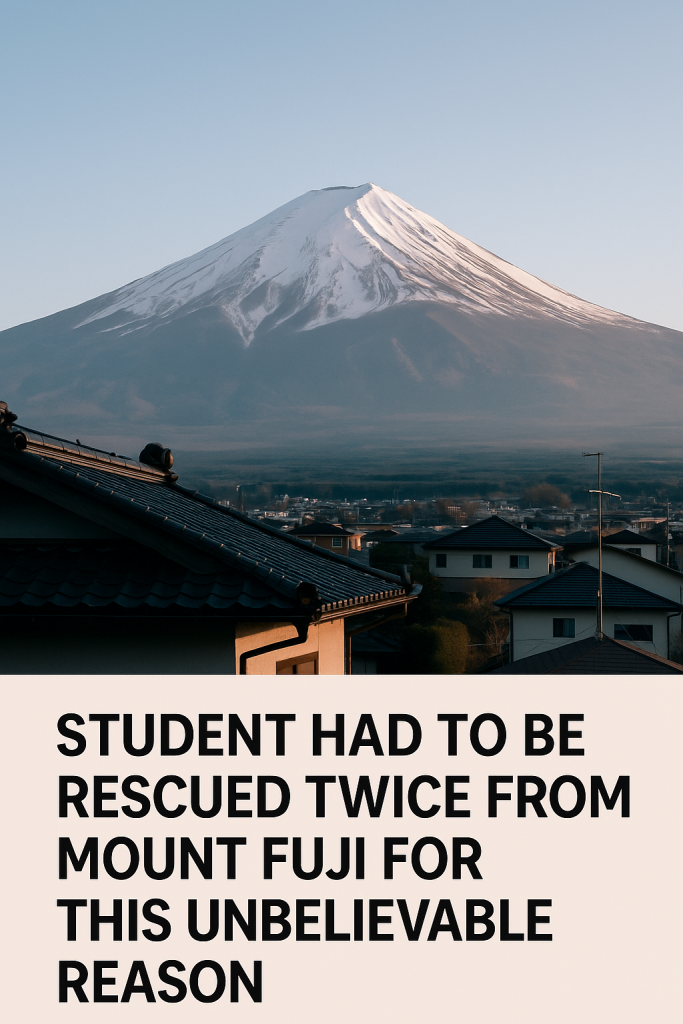A university student hiking Mount Fuji in 2024 faced an extraordinary ordeal after requiring rescue not once, but twice during their ascent. The unusual circumstances surrounding the rescues brought attention to the unpredictable nature of Japan’s tallest mountain, highlighting both the risks of solo hiking and the persistence of emergency teams.
The student, whose identity remains private due to privacy considerations, embarked on the popular summer climbing season, a time when thousands attempt to reach the iconic summit. Despite Mount Fuji’s popularity and well-marked trails, the climb demands physical preparedness and careful planning. This particular case, however, stood out due to an unusual and surprising reason that forced the student into distress twice within days.
According to updates from local authorities, the first rescue occurred after the student suffered a panic attack followed by exhaustion approximately halfway up the Yoshida Trail. Emergency rescue teams were dispatched after fellow climbers alerted mountain safety officials. The student was evacuated down to the 5th Station resting area, where medical staff treated dehydration and symptoms related to altitude sickness.
What made this incident exceptional was the fact that the student attempted to resume the climb just two days later — without full recovery and adequate preparation. The second attempt was cut short when the student again encountered trouble, this time compounded by deteriorated weather conditions and fatigue. Rescue teams had to intervene once more and conducted a carefully coordinated evacuation in worsening visibility and wind.
When asked about the reason for the repeated rescues, officials revealed an unbelievable factor: the student had been so determined to reach the summit that they ignored medical advice and neglected proper acclimatization. Their drive to reach the top was fueled by a personal milestone goal and social media pressure, a growing phenomenon where climbers push their limits to capture the perfect footage for online sharing.
Mountain safety experts caution that while the desire to conquer Mount Fuji is understandable, it’s crucial to respect the mountain’s challenges. Panic attacks, altitude sickness, and sudden changes in weather are common hazards. Rescues not only put the person at risk but also endanger rescuers who carry out operations in difficult terrain and conditions.
The double rescue incident has since sparked conversations online and offline about responsible hiking practices, mental health awareness during outdoor activities, and the impact of social media on decision-making. Authorities are considering new initiatives to better educate and screen climbers during peak seasons to minimize preventable rescues and fatalities.
In the aftermath, the student has expressed gratitude to the rescue teams and pledged to prioritize health and safety in future adventures. The dramatic double rescue on Mount Fuji serves as a powerful reminder of nature’s unpredictability and the importance of preparation, patience, and respecting one’s limits.
As climbing season continues, authorities urge all hikers to plan carefully, heed weather forecasts, and be mindful of their physical and mental condition to ensure a safe and memorable Mount Fuji experience.



